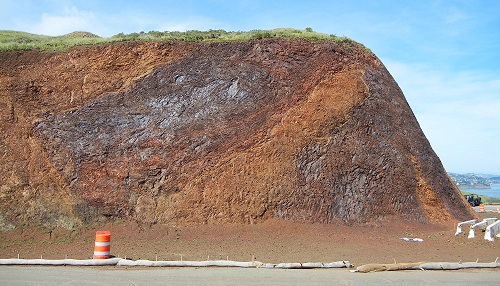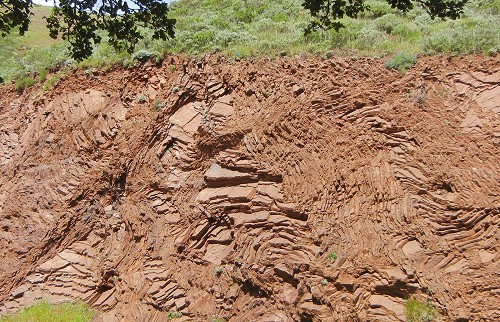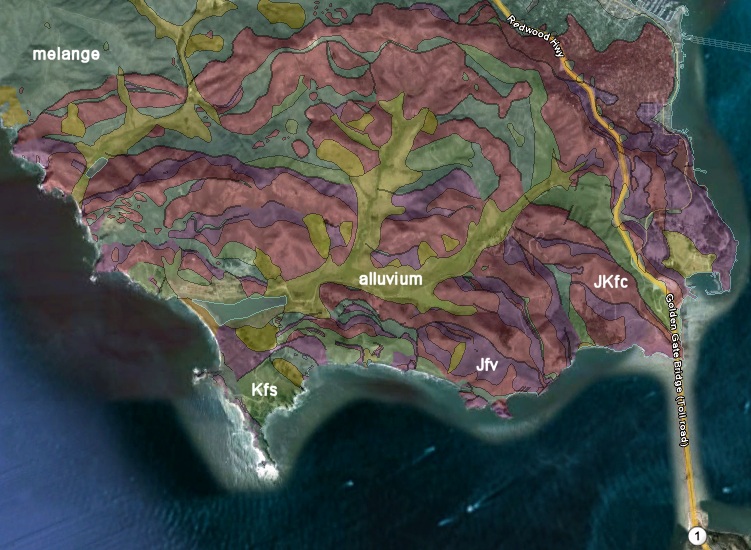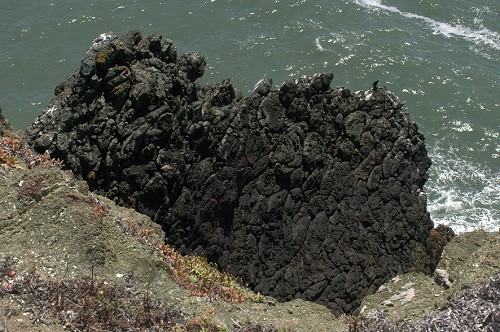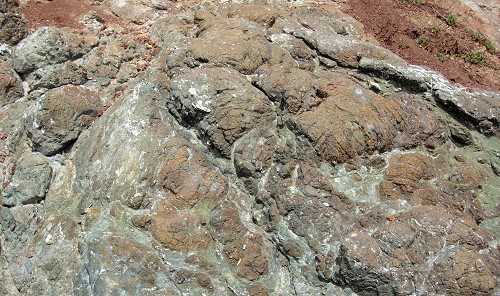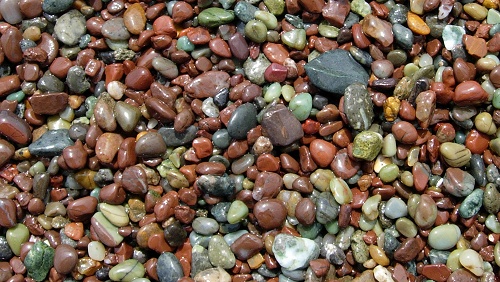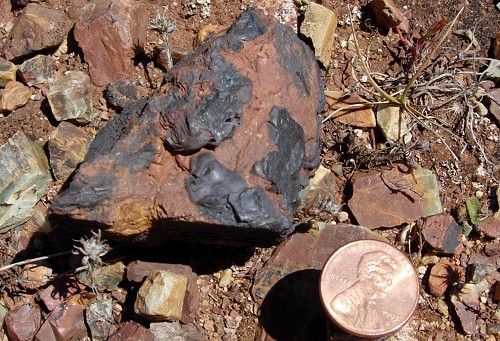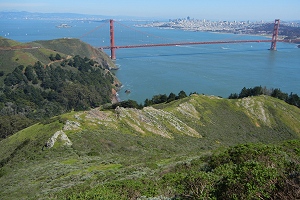 A ridge of deep-sea chert sets off the Golden Gate and its signature bridge. Photos by Andrew Alden except where noted.
A ridge of deep-sea chert sets off the Golden Gate and its signature bridge. Photos by Andrew Alden except where noted.
Thousands of people, tourists and locals alike, come here to gaze over the Golden Gate. But if you turn your back to it, the Marin Headlands are a textbook location to see some classic rocks of the Franciscan Complex. Rocks like these set apart the landscapes that incorporate them, literally shaping San Francisco's worldview.
The Marin Headlands have such a distinctive set of Franciscan rocks that their geologic package is named the Marin Headlands terrane, a geologist's word that means a well-defined piece of land and the closely related rocks that underlie it. The Franciscan has about a dozen terranes represented in the Bay Area, and while the Marin Headlands terrane appears in several places, this is where to see it best.
The Headlands couldn't be easier to get to—the entrance is just north of the Golden Gate Bridge. Head west and start on Conzelman Road, and stop at the first turnout (Battery Spencer) if you can find a parking spot; if there isn't try the next, because all display the same rocks. The roadcuts on Conzelman Road have just been renewed as the roadway is improved, so it's a great time to study them. (Road work goes on during the week; check projectheadlands.gov for updates.) Here's what you'll be looking at. Remember that no hammering or collecting is allowed in the Golden Gate National Recreation Area.

